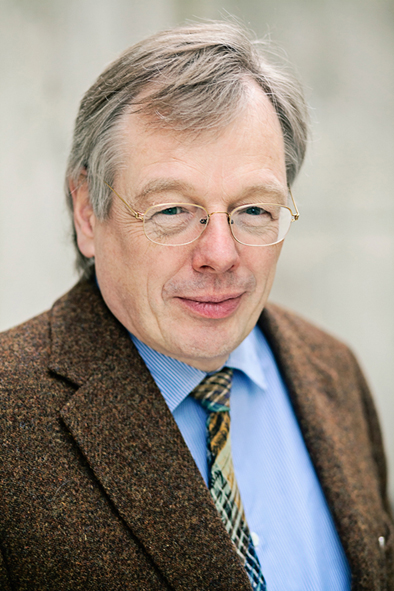Two ERC Advanced Grants for Scientists at the Leibniz Institute for Interactive Materials

Prof. Dr. Martin Möller Phatcharin Tha-in
Sophisticated micro- and nano-objects, as well as functional materials, are Martin Möller’s expertise. Within his ERC-funded project, he strives to make an important contribution to the development of gel-based, light-triggered micro-engines, which could be used to develop new self-actuating materials. These materials may be implemented to biomechanically stimulate cells and tissues in biological and medical applications.
In addition, the project will be a starting point for the development of gel-based microfluidic pumps and self-actuating swimmers and transporters. For this purpose, Martin Möller and his team of polymer chemists use hydrogels, which contain 80 to 98 percent water. By uptake and release of this water, these hydrogels can significantly change their shape.
By using infrared light pulses, Martin Möller and his colleagues were already able to induce transient shape deformations in the gels, leading to fast moving gel architectures with a rate up to 2000 micrometers per second. Within the ERC, Möller aims to obtain fast motion under continuous IR-irradiation by the development of a self-oscillating system with iterative pulsation.
Matthias Wessling’s field of research is membrane technology and he is turning Aachen into an internationally leading center for membrane research. Synthetic membranes play an important role in many industrial processes and medical applications, including water desalination, waste water or waste gas treatment, and applications, such as an artificial lung or kidney.
Current highly permeable and selective membrane materials can only reach top performance if the transport resistance at the membrane-fluid interface is minimized. Matthias Wessling will use his ERC grant to develop new interaction mechanisms that reduce such transport resistances and improve mass transfer. For this purpose, he will analyze and optimize the membrane surface geometry and chemical structure down to the micro- and nanoscale.
In addition, he will engineer the channel structure in membrane set-ups to improve fluid flow. In his project, Wessling will combine classical membrane technology with micro- and nanofluidics, generative nanofabrication, as well as fluid mechanical computer simulations.
In 2014 and 2015 respectively, two DWI junior research group leaders each received an ERC Starting Grant. Since January 2015, the DWI coordinates the Marie Skłodowska-Curie training network BIOGEL, approved by the European Commission. Therefore, five major projects at DWI are currently funded via Horizon 2020, the prestigious EU framework program for research and innovation.
1) Prof. Dr. Martin Möller
Since 2002, Martin Möller heads the Chair of Textile Chemistry and Macromolecular Chemistry at RWTH Aachen University, after being a professor at the University of Twente in the Netherlands and Ulm University. Since 2003, he is the Scientific Director of DWI. In 2003, he was decorated with the Körber European Science Prize. In 2014, the ‘Gesellschaft Deutscher Chemiker’ awarded him the Hermann-Staudinger prize. His field of research focuses on the synthesis of novel polymers and self-assembly of polymer systems.
2) Prof. Dr.-Ing. Matthias Wessling
Since 2010, Matthias Wessling heads the Chair of Chemical Process Engineering at RWTH Aachen University and he is the Vice Scientific Director of DWI. He was Senior Research Scientist at Membrane Technology and Research Inc., Menlo Park, CA and head of the Department of Separation Processes at Akzo Nobel. From 2000 to 2010, he was Chair of Membrane Science and Technology at the University of Twente. He joined the DWI scientific board in 2010 and became vice director in 2015.
Media Contact
All latest news from the category: Awards Funding
Newest articles

First-of-its-kind study uses remote sensing to monitor plastic debris in rivers and lakes
Remote sensing creates a cost-effective solution to monitoring plastic pollution. A first-of-its-kind study from researchers at the University of Minnesota Twin Cities shows how remote sensing can help monitor and…

Laser-based artificial neuron mimics nerve cell functions at lightning speed
With a processing speed a billion times faster than nature, chip-based laser neuron could help advance AI tasks such as pattern recognition and sequence prediction. Researchers have developed a laser-based…

Optimising the processing of plastic waste
Just one look in the yellow bin reveals a colourful jumble of different types of plastic. However, the purer and more uniform plastic waste is, the easier it is to…



